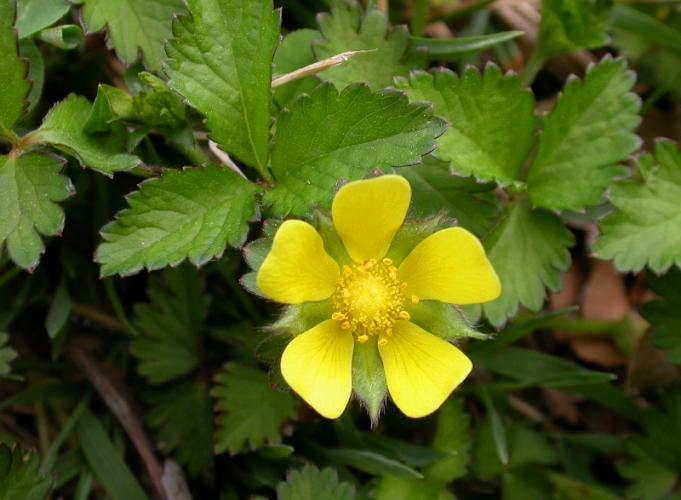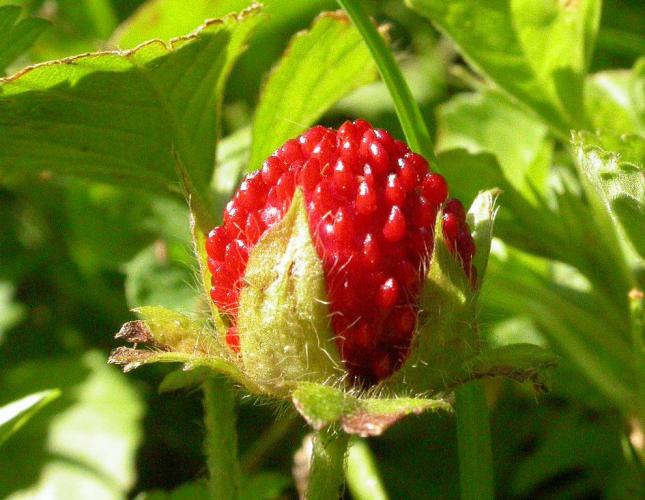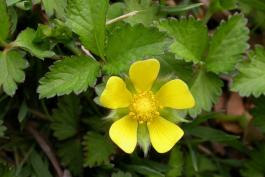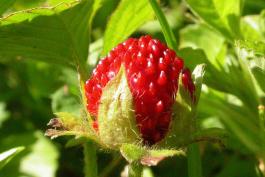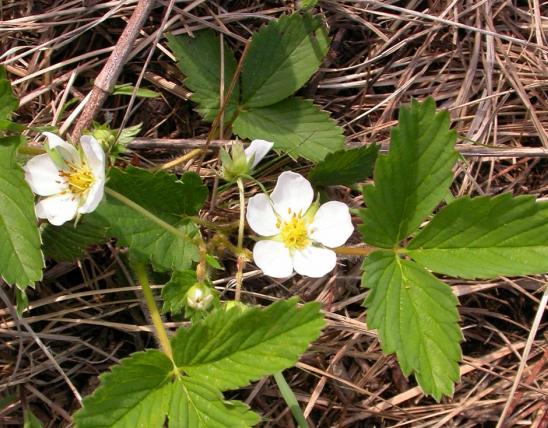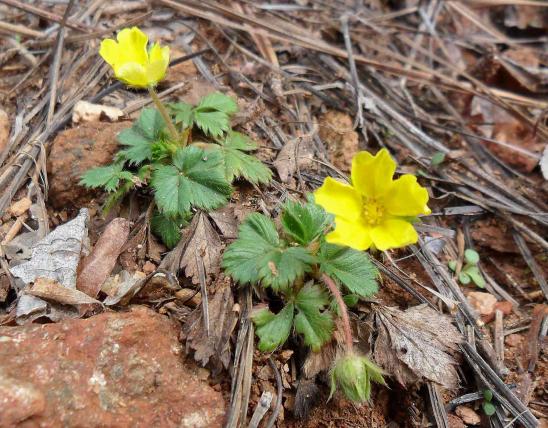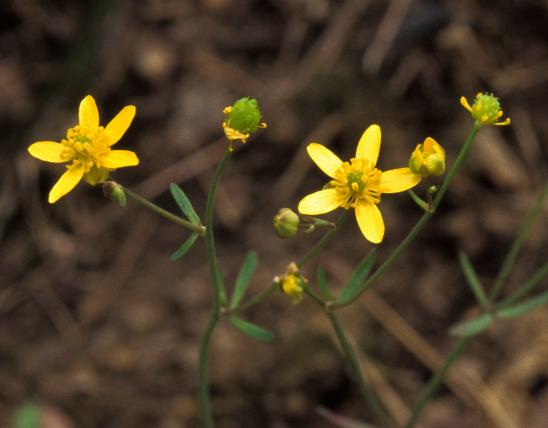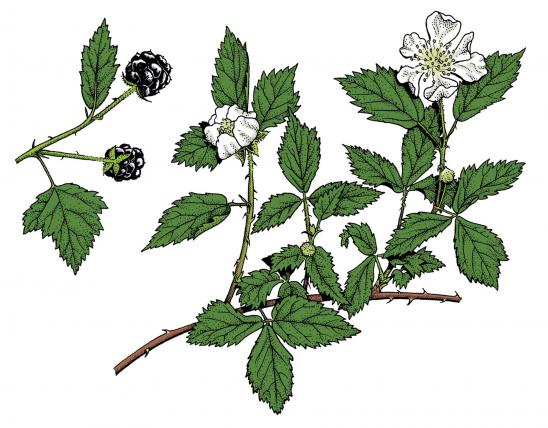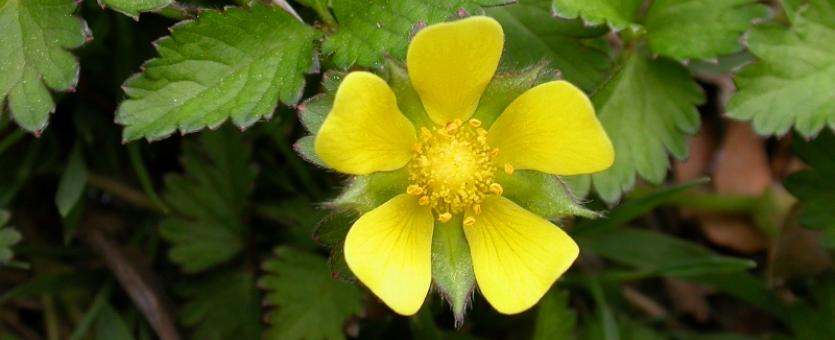
Indian, or mock strawberry, is a weedy, ground-hugging plant that roots from runners. The flowers are solitary, arising from leafy joints along the stems, with 5 leafy bracts at the base of the flower that are toothed and larger than the sepals. Petals 5, yellow. Blooms April–June. Leaves compound with 3 parts; leaflets coarsely toothed, each with its own small stalk; leaves and stems sparsely hairy. Fruits resemble miniature strawberries, but they are not juicy and lack flavor. The fruits are produced April–June, and sporadically through September.
Similar species: Wild strawberry (Fragaria virginiana) is similar but has white petals and fruit that is delicious.
Flowering height: to about 2½ inches; stem length: to more than 1 foot.

Statewide.
Habitat and Conservation
Open areas in woods, prairies, and fields. Commonly found in urban, suburban,and disturbed areas. It might be growing in your yard. This plant is native to eastern and southern Asia, which is reflected in its species name indica (“from India”). It was introduced to the United States as an ornamental and now has become a weed. Some states consider it invasive.
Status
Weedy; invasive in some places. Also called “mock strawberry” and “Indian mock strawberry.” Historically, common names of plants often used the word “Indian” to mean “false” or “mock,” and although that usage is biased, the basic meaning could fit in this case, since this is not a true strawberry (in the genus Fragaria). However, the species name indica means “of India,” and that fits, too, since this plant was first known from the Indian subcontinent.
Human Connections
Weeds that grow in lawns can be annoying, and they support an entire industry of chemical lawn-treatment specialists. However, lawn weeds can also be appreciated for the color and variety they provide. This plant was originally introduced as an ornamental.
Ecosystem Connections
A line is crossed when introduced plants move into wild areas and threaten to outcompete native plants, which are the rightful heirs of the territory they grow upon. This plant is invasive in many locations across America.
